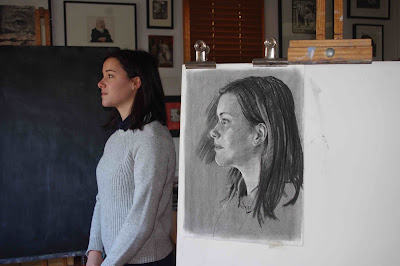Terence Davies, left, and David Stratton
The Melbourne International Film Festival is in it's early days and yet the highlight of the festival has been, and will be, seeing Terence Davies and his newly released film, Sunset Song.
There was a Q&A session after the screening of Sunset Song, and Davies' answers to questions were both enlightening and entertaining. On another occasion he was interviewed by David Stratton about his personal life and his career (pictured above by Deborah Klein), called IN CONVERSATION with Terence Davies.
While much of the film industry aims to entertain audiences with the intention of making a profit, Terence Davies is the opposite, intent on capturing the emotional reality his characters bring to a space. In his answers to questions, emotion is often a word he uses to indicate what is important to him as a film maker and his films find a reflective place within ourselves, something that transcends entertainment. Yet it's his philosophy that has made it difficult for him to get funding for projects and is the reason why there have been long gaps between films. Ironically, this current period in his life has probably been his most productive since he has just released another film about the American poet, Emily Dickinson, titled A Quiet Passion.
One inspiring quality Terence Davies has is his passion for writing and film making and this has kept him boyishly young all his life. He always answers questions with stories and his enthusiasm in the telling bubbles through and effects the audience in such a positive way.
It was great to see David Stratton doing the interview, and how fitting, because his opening remarks were about the way Davies' film Distant Voices, Still Lives effected him in such a profound way.
As Deborah and I were leaving the hall, we were able to stop and have a chat with Terence. We wished we could have stayed for hours, but those moments with him will stay with us as a wonderful memory of this year's film festival.








